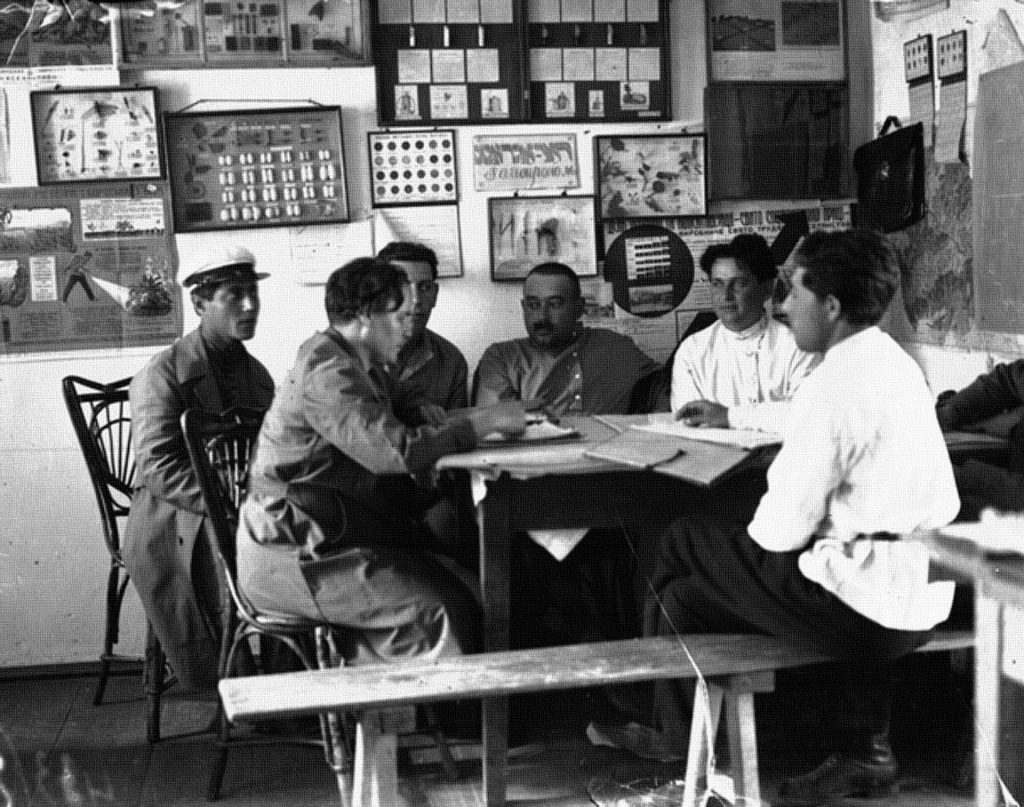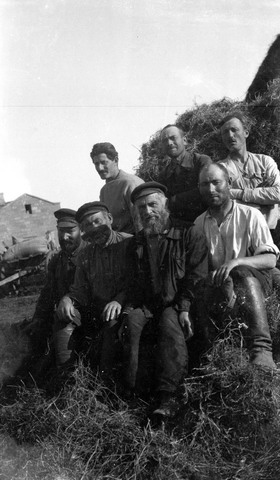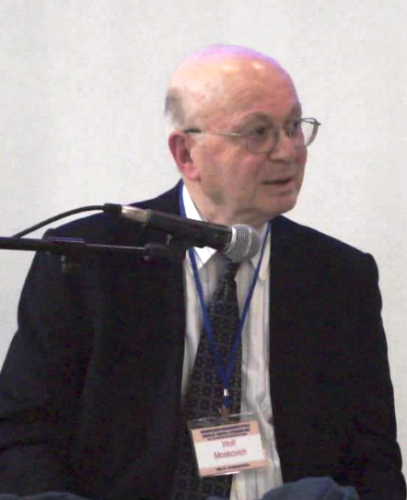Jewish American writer Mendel Osherowitz’s impressions of his trip to Ukraine in the winter of 1932

“The corpses of people who had starved to death lay on the streets. A multitude of Jewish beggars and Ukrainians”
Mendel Osherowitz visited the Soviet Union in February and March 1932. His itinerary included stops in Odesa, Moscow, Trostianets (Vinnytsia oblast), Tulchyn, Kharkiv, and Rostov-on-Don, ending back in Odesa. The writer left a detailed description of events and circumstances that he either saw or heard. By its general tone, his book is striking to the modern reader. It is a documented account by a person with a profound understanding of the essence and causes of the tragic events that he recorded.
Osherowitz was a social democrat, and after what he saw in the Soviet Union, he became utterly stripped of his illusions about the cannibalistic nature of the Stalinist regime.
In Trostianets he met his brother, Daniel, who worked at the raion administration. Mendel had not seen Daniel for 22 years, and no longer had much in common with him. His brother worked on the state grain deliveries and traveled to villages on horseback armed with a revolver and a rifle. He had forgotten the Yiddish language, and communicated with his brother in Ukrainian.
Jews were starving in the small town, and their only sustenance consisted of potato peelings and beets. The corpses of people who had starved to death lay on the streets. A multitude of Jewish beggars and Ukrainians. The only source of food was the bazaar, where peasants brought potatoes and beets, but the prices were so high that few could allow themselves such luxuries.
At the bazaar the lira player sang his sad songs about “Saint Lazar” and others. However, he did not ask for money because the prices were so high, and he couldn’t purchase anything with it anyway; he only asked for bread:
My merciful Lord,
From the high heaven,
Give me a bagel,
Because I really need it.

As is usually done on the Sabbath, Mendel visited the homes of several of his acquaintances. No one could offer him any refreshments: everyone was starving. Everywhere on the roadsides you could see the bodies of dead horses. There was no fodder; horses were simply set free to roam alone and unsupervised on the roads.
In one conversation a peasant told Osherowitz that in 1931 their grain had been purchased for 80 kopecks a pood. “Now, in the spring of 1932, they are ordering us to sow the fields,” he said. “We don’t have seed, but no one believes us. And if they start believing us, they sell us seed for 70 kopecks a pood—the same seed that they took away from us for 80 kopecks a pood. Well, how can you survive?” The peasant told the writer: “You see, at this time of year in past years the fields were already covered with manure, which warmed the earth. But this year the manure is lying only on the roads, causing epidemics and contagion. Cattle are dying, the peasants are half-dead from hunger. Who and with what will the land be plowed and sown this year?”
Osherowitz noted that the peasant spoke openly and on a topic with which not just he alone was familiar, because he and his parents and grandparents and great-grandparents had grown up on this land and had absorbed its breathing from childhood. From his lips came the age-old folk wisdom of the Ukrainian peasant.
Dozens of pages in the book recount what the author witnessed in train cars and train stations. Great masses of peasants were traveling to cities in search of bread. “What is paradoxical,” the author writes, “is that Ukraine was always the breadbasket of the Russian Empire, but now the peasants are traveling outside of Ukraine in search of bread.”
“In Haisyn starving peasants went to starving Jews and urged them to break down the doors of the granary with them”
Osherowitz also writes about peasant revolts, which he calls volenky [read: volynky], and about women’s revolts, when the peasants would place women and children in the front ranks because they hoped that they would not be shot at. He also writes about acts of arson targeting collective farm property.
The author also recounts conversations about how one night starving peasants in Bratslav broke down the doors of the granary and carried out all the grain. In Haisyn starving peasants went to starving Jews and urged them to break down the doors of the granary with them, the same thing that had happened in Bratslav. The peasants said to the Jews: “If you are not with us, this means that you don’t want this, and we will get even with you when the time comes.” Everything was seething and bubbling in Nemyriv, too. “Such rumors,” writes Osherowitz, “prove that things cannot go on like this, that the peasants are searching for a way out; they feel that something must be done. They have only one thing in mind—bread—because they are starving.”
The book devotes considerable attention to a description of the system of total terror, the solid network of informants spread throughout the entire state, the Intourist [Soviet travel agency] system controlled by the OGPU [secret police], where foreigners were shown only what the authorities wanted them to see. Incidentally, this was the first time that I encountered in a book published outside the USSR in 1933 a reference to OGPU psychiatric hospitals, where opponents of the Stalinist regime were held.
Osherowitz notes bitterly that most foreigner visitors to Ukraine did not understand the state of affairs because they were unfamiliar with the local conditions and the language. Such a tourist sees a huge lineup on a street in front of a store. He asks the Intourist interpreter: “What foods are these people lining up for?” She explains: “These people, full of enthusiasm, want to sign up as quickly as possible for a state loan to help industrialization.”
Other tourists—communists—refused to see the truth and shut their eyes, explaining away all the difficulties by the great goal of building a just society.
I hope that Osherowitz’s book finds its place in the research on the Holodomor.
List of Illustrations:
- Meeting of raion organs about the harvesting campaign, Kalinindorf Jewish National District, Ukrainian SSR (1931). This photograph is from the website “1920s–1930s, ORT–OZET,” http://www.ozet.ort.spb.ru/rus/index.php?id=1275 .
- Jewish farmers from the Roiter Oktiabr colony, Kalinindorf Jewish National District, Ukrainian SSR (mid-1920s). This photograph is from the website “1920s–1930s, ORT–OZET,” http://www.ozet.ort.spb.ru/rus/index.php?id=1253.
About the author
 Doctor of Philology, professor of the Hebrew University of Jerusalem, member of the Board of Directors of the non-profit organization Ukrainian Jewish Encounter (UJE).
Doctor of Philology, professor of the Hebrew University of Jerusalem, member of the Board of Directors of the non-profit organization Ukrainian Jewish Encounter (UJE).
His scholarly interests include linguistics, Ukrainian language and literature, Polish language and literature, the language of Diaspora Jews, Yiddish language and culture, the history of Eastern European Jewry, Jewish-Slavic relations, emigration, assimilation, and acculturation.
Dr. Moskovich is the author of more than three hundred publications (including twelve books) that have appeared in the Russian, Ukrainian, English, Yiddish, Hebrew, French, Spanish, Italian, and Czech languages.
To contact the author:
[email protected]
Originally appeared in Ukrainian @HolodomorStudies.com.
Translated from the Ukrainian by Marta D. Olynyk.
Edited by Peter Bejger.



















